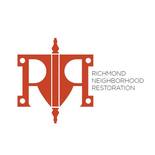Origin Story
Following the housing crisis of 2008, and the economic repercussions that followed, many rural communities around the state struggled to respond to the negatives associated with the aftermath of that fallout, much of this in the form of an over abundance of vacant and abandoned houses. Many communities - including Richmond - responded by utilizing Federal programs, such as the Blight Elimination Program, which focused its efforts around the demolition of vacant and abandoned residential properties (thousands around the state and hundreds in Richmond). Thankfully Indiana Landmarks worked tirelessly to evaluate every property that was considered for this program and saved many.
The genesis of Richmond Neighborhood Restoration (RNR) was born during the height of this crisis, and in response to the absence of a preservation organization willing to take ownership of historic vacant and abandoned property and find productive uses for them. Chad Stegner, local developer and contractor, J.P. Hall - at that time with Indiana Landmarks, and Shaun Dingwerth, ED of the Richmond Art Museum, met several times during 2013 to strategize about what to do. Dr. Jetmore joined the conversation soon after, and it was agreed that a new group needed to be created to take action. These early meetings centered on the need for RNR to take some risk and put skin in the game. This initial group understood that no one was coming to Richmond to save our homes or our neighborhoods. We needed to try to do something, even if it was one house at a time.
We realized during our first project, the William F. Bockhoff House, that we were on to something. We saved the house utilizing a three way agreement between the city, the bank which wanted to dump it, and us. Upon acquisition, a neighbor approached the group and stated she felt like, "she had won the lottery." Concerned about the investment in her property, her family, and neighborhood, she worried about the future prospects for that house, and when she found out that RNR was going to rehabilitate it back into a single family home, the future for that street looked much brighter. Upon completion of the rehab, the community open house to showcase the project was packed. The community was hungry for this type of work.
In less than 8 years, RNR has organized a respectful grass roots group. They incorporated as a 501c3 organization, have rehabilitated 4 single family homes - leveraging well over $800,000 worth of private investment (this is not including new tax dollars created and/or increased values of adjoining properties - and have grown their board to include respected community members. Currently, RNR is redeveloping a home, which was once considered the ugliest home in the city, and has recently partnered with the City of Richmond on a half a million-dollar mixed-use redevelopment of a historic downtown building.
The genesis of Richmond Neighborhood Restoration (RNR) was born during the height of this crisis, and in response to the absence of a preservation organization willing to take ownership of historic vacant and abandoned property and find productive uses for them. Chad Stegner, local developer and contractor, J.P. Hall - at that time with Indiana Landmarks, and Shaun Dingwerth, ED of the Richmond Art Museum, met several times during 2013 to strategize about what to do. Dr. Jetmore joined the conversation soon after, and it was agreed that a new group needed to be created to take action. These early meetings centered on the need for RNR to take some risk and put skin in the game. This initial group understood that no one was coming to Richmond to save our homes or our neighborhoods. We needed to try to do something, even if it was one house at a time.
We realized during our first project, the William F. Bockhoff House, that we were on to something. We saved the house utilizing a three way agreement between the city, the bank which wanted to dump it, and us. Upon acquisition, a neighbor approached the group and stated she felt like, "she had won the lottery." Concerned about the investment in her property, her family, and neighborhood, she worried about the future prospects for that house, and when she found out that RNR was going to rehabilitate it back into a single family home, the future for that street looked much brighter. Upon completion of the rehab, the community open house to showcase the project was packed. The community was hungry for this type of work.
In less than 8 years, RNR has organized a respectful grass roots group. They incorporated as a 501c3 organization, have rehabilitated 4 single family homes - leveraging well over $800,000 worth of private investment (this is not including new tax dollars created and/or increased values of adjoining properties - and have grown their board to include respected community members. Currently, RNR is redeveloping a home, which was once considered the ugliest home in the city, and has recently partnered with the City of Richmond on a half a million-dollar mixed-use redevelopment of a historic downtown building.
